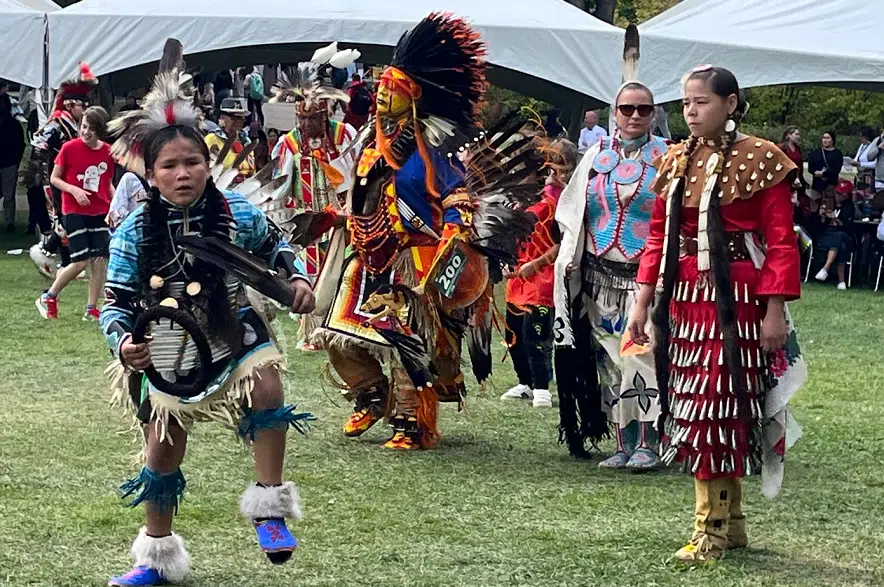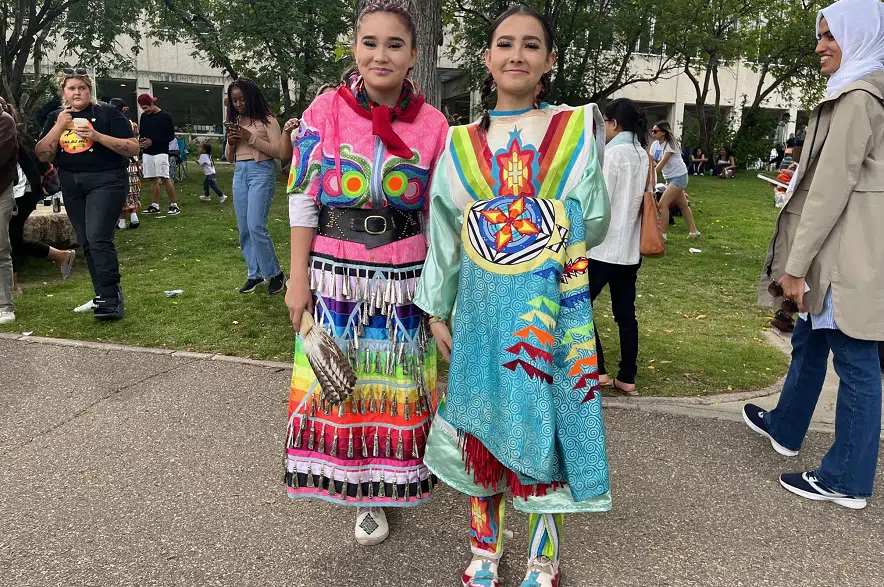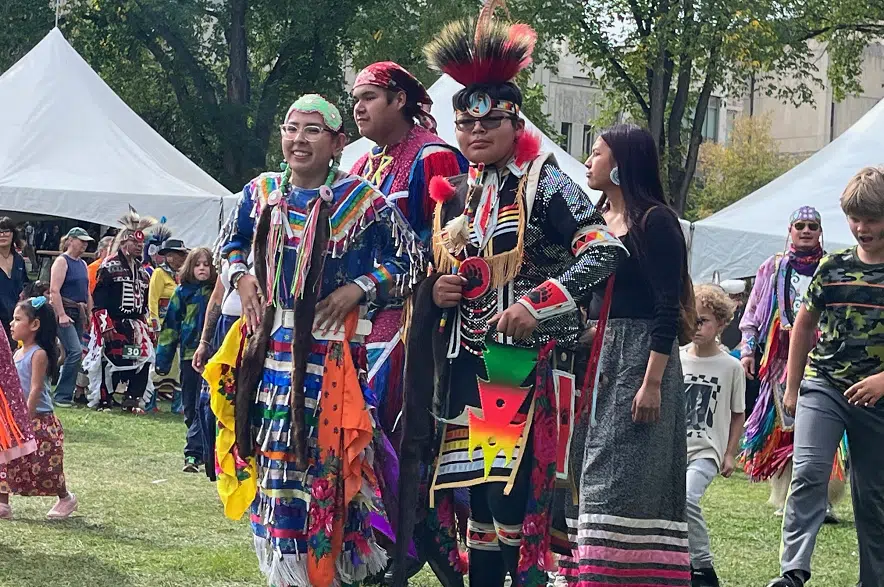Dancers were moving to the beat of their own drums at the University of Saskatchewan’s annual Welcome Back Powwow and Métis Dance Celebration on Tuesday.
Angela Jaime, interim vice-provost for Indigenous engagement at the university, said more than 300 dancers from the prairies came together to participate in different variations of Indigenous powwow dancing and Métis jigging on Tuesday.

Indigenous dancers embrace their culture at the University of Saskatchewan’s annual Powwow and Métis Celebration. (Mia Holowaychuk/650 CKOM)
A sea of traditional jingle dresses could be seen throughout the Bowl at the university. Jaime explained that the dance associated with the dresses represents healing.
Elders and knowledge keepers were also at the powwow to support the dancers and community, and Jaime said that their wisdom is essential to the Indigenous community.

Fancy dancer Patrick Mitsuing serves as a headman dancer at the annual powwow at the University of Saskatchewan. (Mia Holowaychuk/650 CKOM)
Fancy dancer Patrick Mitsuing was one of the powwow’s head dancers. He said he feels pride in representing his culture and showing others what it means to be Indigenous.
“I think back to residential schools and the Indian Act, where we weren’t allowed to do this stuff. If you go back 70 years, we’d go to jail for doing this type of thing,” he said.
Mitsuing said it’s important for everyone to acknowledge First Nation land and take part in learning about the history of Indigenous culture.
“This is the first form of music, of song and dance on this land right here in Canada and North America,” he added.
Growing up, Mitsuing said every summer was powwow season, and he’s been immersed in his culture for as long as he can remember.
“As soon as I (could) walk, I was out on this dance floor, dancing to the heartbeat of the drum,” he said.
Today, he said he travels all over the world to showcase the traditional Indigenous forms of dancing, and said he wants to pass his knowledge down to his children and younger generations.
“Seeing my kids grow up in this world of powwow is so beautiful to me,” he said.

Métis dancer Courtney-Dawn Anaquod taught the traditional Red River Jig at the annual University of Saskatchewan Powwow and Métis celebration. (Mia Holowaychuk/650 CKOM)
Courtney-Dawn Anaquod, the lead Métis head dancer for the event, said she taught attendees how to dance the Red River Jig, a traditional and popular Métis dance.
Anaquod said the jig – which she described as the “unofficial Métis anthem” – is also a competition dance.
“There’s two songs, two anthems. One you sing to, and one you dance to,” she said.
Anaquod said footwork from First Nations powwow dancing, Irish, Scottish, and French-Canadian dances has been incorporated in the Métis jig.
She said she’s passionate about the art of Métis dancing, and was proud to represent the community “in the time of truth and reconciliation.”

Indigenous dancers show off their traditional clothing and jingle dresses at an annual powwow at the University of Saskatchewan. (Mia Holowaychuk/650 CKOM)











